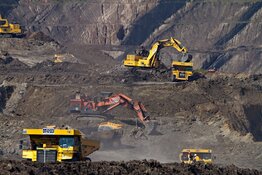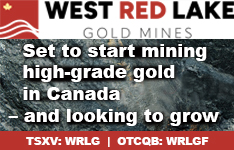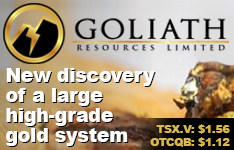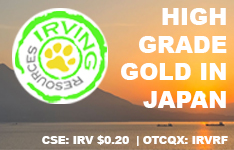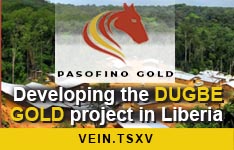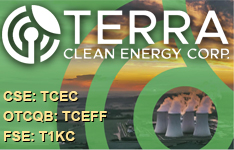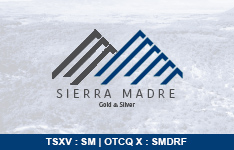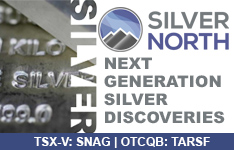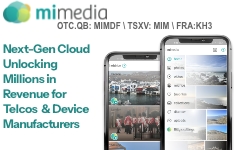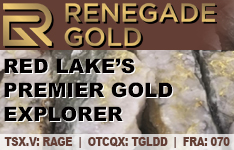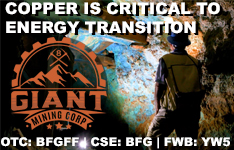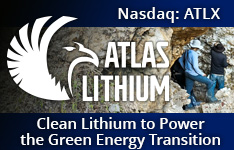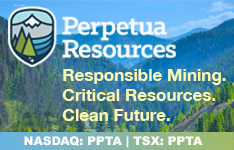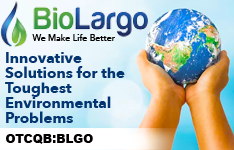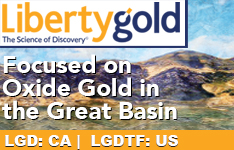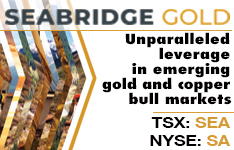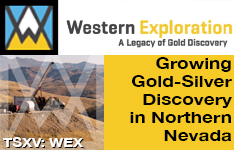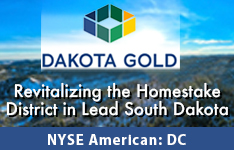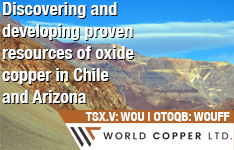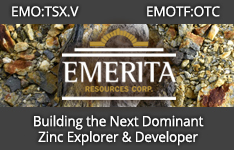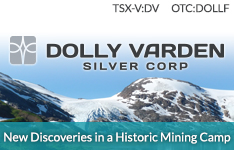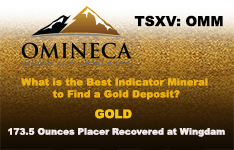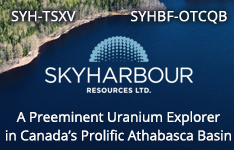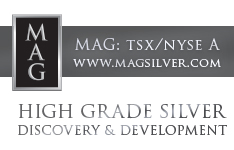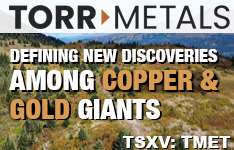Situated in the northeastern corner of the Democratic Republic of Congo lies Africa's leading gold production facility. It is Barrick Mining Corp. and AngloGold Ashanti Ltd.'s (AU:NYSE; ANG:JSE; AGG:ASX; AGD:LSE) (ABX:TSX; B:NYSE) jointly-owned Kibali Gold Mine.
Located approximately 138 miles east of Isiro and close to Uganda's border, the Kibali gold mine extends across a 1,140 square mile territory, out-measuring urban areas like Greater London. It's enormous!
Managed by Barrick Gold alongside AngloGold Ashanti (each controlling 45%) and Congo's state-owned SOKIMO (10%), the facility incorporates both surface and subterranean extraction methods.
Let's examine this extraordinary golden fortune.
The Gold Treasure
Kibali ranks among Africa's most substantial gold deposits. Imagine an immense wealth vault concealed beneath the earth's surface! Just how substantial is this underground treasure?
- Currently, there's sufficient gold to fill approximately 10.2 million storage containers!
- That translates to 10 million ounces of gold. At today's market rates, that represents roughly $34.6 billion in total resource value.
- Some portions are readily accessible, while others remain hidden deep below.
Who controls this wealth? Three entities share ownership:
- Barrick Gold possesses nearly half.
- AngloGold Ashanti holds another substantial portion.
- And Congo's government maintains a smaller stake.
So with 10 million ounces available, Barrick Gold's share amounts to approximately 4.6 million ounces — an ENORMOUS quantity!
How long will this wealth last?
Mine workers extract gold daily, but proceed methodically. Present estimates suggest enough reserves for approximately 13 additional years of operation. Remarkably, exploration continues to uncover new deposits! Some analysts believe extraction might continue until 2040 — just 15 years from now.
The Kibali operation mirrors the Mponeng gold mine in South Africa regarding magnitude, dimensions, and geological configuration. And therein lies the dilemma.
Historical Development
Kibali's backstory proves as multifaceted as its mineral composition. Gold was initially discovered in the area in 1903 during colonial expeditions, with periodic small-scale operations throughout the mid-1900s. Findings in 1998 by Randgold Resources Ltd. (GOLD:NASDAQ; RRS:LSE) and AngloGold (then through Moto Goldmines) faced disruption from regional conflict during the Second Congo War, including severe human rights violations committed by armed factions attempting to seize the resource.
Nevertheless, the collaborative venture progressed; a 2009 consolidation — along with continuous contemporary exploration — culminated in the facility's activation in September 2013, requiring approximately US$1.7 billion in investment.
Since then, Kibali has evolved into one of Africa's most technologically advanced and productive mining establishments — a cost-effective producer delivering impressive yields.
Magnitude and Sustainability
Kibali isn't merely extensive — it's technologically sophisticated. Its infrastructure encompasses dual-process sulfide and oxide treatment, gravitational separation, carbon-in-leach mechanisms, plus suspended and ultra-refined grinding circuits.
Substantially powered by sustainable hydroelectric facilities (44 MW combined) and soon, a 16 MW solar installation with energy storage capabilities, the operation aims to achieve up to 100% renewable power during dry periods. This initiative forms part of a broader plan to decrease CO₂ emissions — reducing fuel consumption by approximately 53% and increasing from 81% to 85% renewable energy utilization in 2025. In 2024 alone, Kibali achieved unprecedented processing volumes while maintaining global standards for environmental management (ISO 14001) and workplace safety (ISO 45001).
Financial commitments toward relocation and community initiatives — healthcare, educational facilities, infrastructure — alongside a $5.7 billion contribution to the regional economy, demonstrate ongoing collaboration with local stakeholders.
Persistent Issues
However, Kibali isn't without criticism. Its initial phase involved forced relocations and humanitarian difficulties. Power imbalances exposed during the Second Congo War, Marburg outbreaks among informal miners, and disruption to indigenous populations affect its historical legacy.
Despite advanced operations and community investments, concerns regarding water usage, wildlife protection, waste management, and fair wealth distribution remain contentious. And regardless of how "environmentally friendly" a mining operation becomes, it cannot entirely escape the ecological impact and social upheaval inherent in resource extraction.
Should We Ban Open Energy Mines or Reconsider Our Approach?
The perspective found in the Ecoticias article, "We should never open this mine," provides a thought-provoking counterargument. It opposes large-scale energy and mining developments, cautioning against irreversible ecological harm, depleting communities, destroying natural environments, and establishing corporate control over local resources.
This concern reflects growing global awareness: regardless of responsible management practices, once mining begins, the surrounding landscape, populations, and ecosystems are permanently altered. While Kibali has implemented responsible mining practices, critics maintain it still causes disruption, displaces communities, industrializes landscapes, and sacrifices natural habitats to machinery. Legitimate questions persist regarding how Kibali's benefits are distributed and the long-term environmental recovery following mine closure.
Introducing NatGold: A Revolutionary Alternative
Here's where NatGold Digital Ltd. emerges as an innovative solution — addressing modern environmental consciousness.
What Is NatGold?
NatGold utilizes cutting-edge technology: digital mining. Rather than physical extraction, it tokenizes underground gold reserves — verified deposits remain untouched, yet fully exchangeable as blockchain-secured tokens.
The system collaborates with legally recognized gold properties (permanent claims in the U.S., Canada, Australia) and converts them into "Certified NatGold Resources," which support NatGold Tokens.
Here's its significance:
- No extraction, no environmental impact. Gold remains in its geological location; no equipment, pollution, waste, displacement, or deforestation — just value mobilization.
- Quicker returns, enhanced environmental stewardship. By avoiding permit processes, capital-raising phases, and community approval challenges, mining companies access funding within weeks instead of years. No ownership dilution, no exploration expenses, and sustainability metrics are inherently positive.
- Attractive to investors. It combines gold's established stability with cryptocurrency convenience — high transferability, worldwide accessibility, and openness.
- Practical implementations. NatGold has already established frameworks allowing tokenization of Pebble Creek and similar untapped deposits — particularly environmentally sensitive locations — demonstrating feasibility for wider application.
Potential Application to Kibali?
While Kibali represents an active operation in a different jurisdiction, the comparison provides valuable insights:
| Feature | Kibali Mine | NatGold Tokenization |
|---|---|---|
| Physical extraction | Yes (surface & underground) | No |
| Environmental impact | Controlled, but present | None |
| Community effect | Relocation and ongoing social programs | No displacement |
| Sustainability appeal | Advanced for mining, but fundamentally limited | Environmentally aligned by design |
| Financial access | Conventional capital expenditure and debt frameworks | Immediate token-backed value creation |
NatGold addresses a complementary market segment: Active operations like Kibali fulfill current demand, while NatGold's approach suits future, inactive, or disputed deposits, offering financially viable alternatives that minimize environmental harm.
The Meaningful Parallel
The connections between Kibali's trajectory and NatGold's concept are revealing:
- Operational excellence meets fundamental reconsideration. Kibali demonstrates sustainable mining progress — from renewable energy to international certifications. Yet ecological and social costs persist. Tokenizing deposits might represent the next evolutionary step.
- Investment meets environmental awareness. Barrick's $1.7 billion commitment to Kibali illustrates the necessary scale. NatGold's methodology democratizes participation — allowing both mining companies and investors involvement without industrial footprint.
- Long-term planning matters. Kibali's lifespan remains finite; its environmental restoration uncertain. NatGold's deposits stay intact, providing continuous value through financial instruments and potentially supporting remediation indirectly, via token proceeds.
NatGold shouldn't be viewed as replacing responsible mining, but rather, as a parallel approach:
- Gold preserved vs gold extracted. Kibali delivers physical ounces. NatGold unlocks value without disturbing the environment. Both can coexist — providing diversification across financial and environmental considerations.
- Environmental compatibility. Kibali's solar-hydro transition shows commitment. NatGold extends that philosophy further — by removing extraction entirely from the financial equation.
- Community protection. Kibali's relocation programs benefit certain groups, but those remaining still experience environmental changes. NatGold's framework avoids this situation, preserving local traditions while generating economic value globally.
For emerging or delayed projects, particularly where environmental, regulatory, or social restrictions exist, NatGold offers a path forward — monetizing the resource without physically accessing it. Kibali, meanwhile, demonstrates that when conducted properly, mining can strengthen economies and communities responsibly.
Conclusion
The Kibali Gold Mine exemplifies modern mining's capabilities: impressive scale, renewable integration, operational excellence, and community engagement — all within one vast expanse of earth and technology. Yet its existence still entails permanent transformation.
The NatGold concept reverses this approach, anchoring gold's worth in financial rather than physical terms. It presents a future where gold supports economies without extraction — where deposits generate value financially, not industrially. Rather than selecting one approach exclusively, the optimal path may involve combining both models:
- Utilize Kibali-style operations to address immediate supply requirements responsibly.
- Implement NatGold tokens to safeguard disputed, remote, or undeveloped deposits — unlocking value while protecting ecosystems.
In an era where environmental responsibility is essential and investment must align with conscience, NatGold represents a transformative possibility — potentially redefining extraction methods for the 21st century.
The Kibali mine succeeds through careful extraction. NatGold succeeds by avoiding extraction entirely. Perhaps the greatest achievement lies in allowing both approaches to illuminate our path forward.
| Want to be the first to know about interesting Gold investment ideas? Sign up to receive the FREE Streetwise Reports' newsletter. | Subscribe |
Important Disclosures:
- As of the date of this article, officers and/or employees of Streetwise Reports LLC (including members of their household) own securities of Barrick Gold Corp. and NatGold Digital.
- Brian Hicks: I, or members of my immediate household or family, own securities of: NatGold Digital. My company has a financial relationship with: None. My company has purchased stocks mentioned in this article for my management clients: None. I determined which companies would be included in this article based on my research and understanding of the sector.
- Statements and opinions expressed are the opinions of the author and not of Streetwise Reports, Street Smart, or their officers. The author is wholly responsible for the accuracy of the statements. Streetwise Reports was not paid by the author to publish or syndicate this article. Streetwise Reports requires contributing authors to disclose any shareholdings in, or economic relationships with, companies that they write about. Any disclosures from the author can be found below. Streetwise Reports relies upon the authors to accurately provide this information and Streetwise Reports has no means of verifying its accuracy.
- This article does not constitute investment advice and is not a solicitation for any investment. Streetwise Reports does not render general or specific investment advice and the information on Streetwise Reports should not be considered a recommendation to buy or sell any security. Each reader is encouraged to consult with his or her personal financial adviser and perform their own comprehensive investment research. By opening this page, each reader accepts and agrees to Streetwise Reports' terms of use and full legal disclaimer. Streetwise Reports does not endorse or recommend the business, products, services or securities of any company.
For additional disclosures, please click here.




